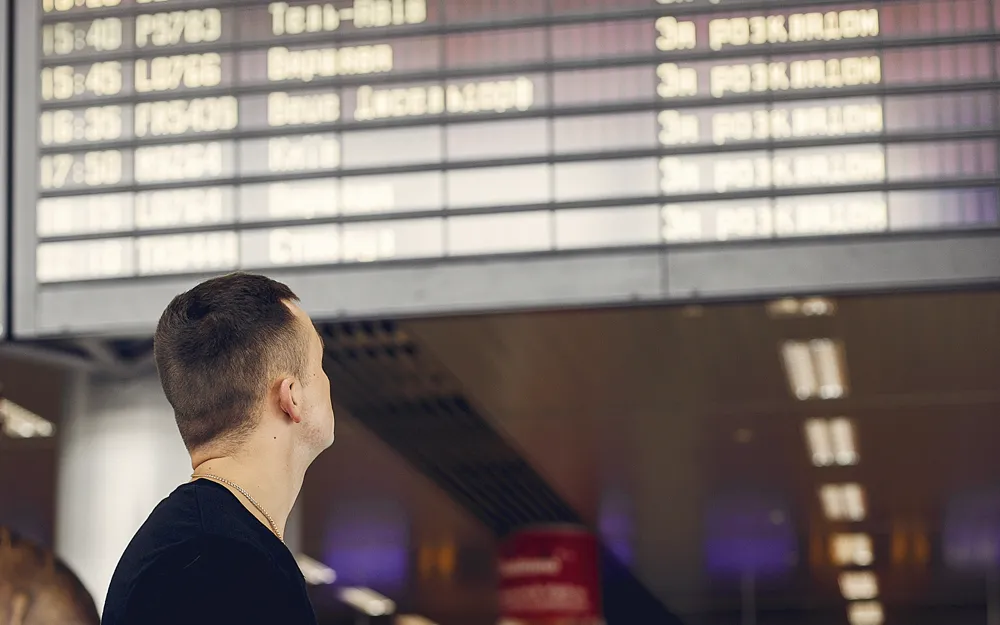Solving the Airline Industry’s Most Pressing Business Problems
Air travel is the safest form of travel. However, the industry is vulnerable to a multitude of problems. What are they? Let's investigate.

Solving the Airline Industry’s Most Pressing Business Problems

Offering a Hassle-Free Shopping Experience

Business Intelligence
-
Data processing via general purpose business BI systems
-
Data processing via industry specific BI systems

The general-purpose BI systems tend to have the advantage of being more advanced, having functionalities that will make them very useful for analyzing data quickly, with user-friendly interfaces for presenting and analyzing the results. BI systems are the most flexible on the market, and their functionalities are designed to suit a wide array of companies.
The specialized BI systems will be designed around the airline’s unique necessities and will include functionalities geared towards finding answers to specific problems.
Offering Personalization
Airlines have much information about their customers, but only recently have they started to use new technologies to process all of the data and make sense of it. If they can manage to extract some actionable insights, they can provide users with more customized experiences. New technologies such as New Distribution Capability (NDC), Rich Content and Dynamic Pricing are now being used. While these technologies are facilitating personalization efforts, the airlines themselves will have to put in the effort to implement them and establish the necessary processes.
NDC does an excellent job of recognizing the needs of the travellers and presents them with more individualized content. The NDC strategy allows airlines to offer their products through as many channels as possible and highlight some features that help them stand out from the competition. A great example of this strategy in action is American Airlines. They leveraged NDC to sell ancillary products, such as their Main Cabin Extra and Preferred Seats.
Another way airlines offer more personalized experiences to their customers is by reaching them on their mobile devices. Mobile applications development has allowed airlines to help alleviate some of the stress that comes with air travel, from navigating through airports all the way to ground transportation from the airport. For example, United Airlines has partnered with Uber, Jet Blue with Lyft, and many other airlines are trying to follow suit. Customers do not use mobile applications to book tickets. Instead, they are looking to get some additional perks that will improve their travel experience.
Even though airlines have made significant progress in implementing the latest aerospace software, there is still much work to benefit from the mobile applications opportunity. The aviation companies that are the quickest to adjust and propose customers’ experiences tailored to their needs will increase fulfilled clients and brand advocates. Airlines need to distinguish themselves from the crowded playing field, which is critical in today’s experience economy.
Incorporating the Enterprise Data Warehouse
We talked about all of the data the airline companies accumulate and how they can enhance the customer experience. However, the key to truly unlocking the value of this unique asset is using an enterprise data warehouse (EDW). Many airline companies have multiple siloed versions of their data which makes it difficult to extract any insights. The EDW would allow them to have a single version of the data that can be accessed by all departments and actively used to create business opportunities and obtain a competitive edge.

For example, all airlines are dealing with the problem of flight delays. It harms customer satisfaction and retention, reduces revenue and creates chaos as far as schedules are concerned. If the airlines could go beyond the expensive and time-consuming approaches that their legacy IT infrastructure offers, they could analyze the data to understand what causes the delays and mitigate them before they become a real problem. With the EDW, the airlines will create many canvases, compare all kinds of datasets, choose different graph types, add trend lines and many other things to show the connection between flights and delays within the specified timeframe.
Furthermore, they will create visualizations like delays by state, airport, custom flight counts and many other comparisons. All the figures once limited to an Excel spreadsheet may be transformed into a presentation to allow executives to make smarter decisions.
One interesting trend we can notice in the aerospace industry is companies using the EDW to manage and reduce operational costs. The noteworthy approach to accomplish this goal is the utilization of predictive analytics. The data obtained can improve Maintenance, Repair and Overhaul (also known as MRO) and the overall health observing of the airship. The Original Equipment Manufacturers have predominantly performed this, but carriers and MROs might require progressively demonstrated track records in the technical processes.
The fundamental objective of predictive maintenance is to foresee when a component failure may occur and keep this from happening by providing the necessary care. The benefits of using such an aircraft maintenance management system would include better inventory forecasting and management of resources. To the extent the expenses are concerned, the carriers will be able to minimize the time necessary to maintain the equipment, decrease the production hours lost due to maintenance and lower the costs of spare parts and supplies.
High Cost of Fuel
The fuel involved in air transportation is one of the most volatile yet necessary operational costs. The amount of fuel the aircraft consumes will directly impact cargo and passenger demand via pricing. The airlines are well aware of the consequences of inefficient fuel consumption, including price increases and market loss. From an operational point of view, the stages from the engine start, taxi, takeoff, straight flight, approach, landing, taxi and engine stops are a cycle in which a plane consumes fuel during operation. An appropriate operation planning and strategy can optimize the consumption of fuel during these stages.

The way companies try to lower costs is through fuel hedging. It works when fuel is being bought by airlines with a fixed price for a preconceived time period. Ordinarily, the carriers will hedge just a part of their full fuel necessities with different covering contracts since the hedging understandings lapse over the long haul. A great example of this strategy is what Southwest Airlines has been able to do, saving around $4 billion from 1999 to 2008. Nonetheless, Southwest also faced another side of the coin when it hedged 70% of its fuel in 2008 at $51 a barrel. After the prices declined from their peak of $125 a barrel, Southwest Airlines company informed about almost $120 mln loss since the fuel price was now lower than they hedged it. The EDW can help airlines improve their fuel hedging initiatives to manage the risks better and decide whether or not it is beneficial to continue such a strategy in the future.
Something else the airline companies need to figure out is how to optimize the cost of refuelling. This means they will have to reevaluate the effectiveness of carrying additional fuel and the price fluctuation from one airport to another. Since the route and fuel consumption will change with every trip, it can be possible to plan the stopovers ahead of time to find the best places to refuel.
Environmental Concerns
Even though air travel has had a positive economic and social impact, many people are concerned about the environmental toll that it is causing. According to the Intergovernmental Panel on Climate Change (IPCC), air transportation contributes 4.9% of the human-caused climate change. Airlines such as KLM and Lufthansa have gotten out in front of this issue by using aircraft that fly on electrical engines and other sustainable technologies. Given that social responsibility is on the rise, airlines will continue to try to find more renewable and sustainable solutions for aviation.

It all starts with tracking since you can not manage what you do not measure. It includes emissions, emission intensity, fuel consumption, efficiency. Also, you need to set your following location at the exact point in time. The IATA has set its goals for both the long and short term. They want a cap on net aviation CO2 emissions from 2020 and a 50% reduction in net CO2 emissions by 2050. The airlines will also have to set ambitious yet realistic goals for themselves. They can leverage centralized reporting tools to keep an eye on the overall trends and conduct sustainability audits to ensure that they comply with all laws and regulations. If they can not obtain the needed insights from the data they collected, they will have to use more powerful aerospace software and create databases to help them make sense of all the data they have.
The final step would be to share the results. This increases transparency and builds trust with the public at large. More importantly, it shows everybody that you take sustainability seriously and are accountable as a company. The environmental sustainability reports will also allow you to solidify your plans and goals with both internal employees and customers so that they can understand the full scope of your strategy. The goal is to get as many people on board as possible. Sustainability will require executive buy-in, but everybody down the line will have to do their fair share to implement the strategy.
Planning for the Future Must Begin Today
Airlines are under constant pressure to adapt to ever-evolving market changes and embrace new technologies to improve the customers’ experience and enhance operations. The regulations placed on the airline companies further complicate the designs of the solutions, which slow bureaucratic IT departments usually design. The newer airlines have not been slowed down by legacy infrastructure and processes and, as a result, can adapt and employ new technologies. Legacy airlines will have to look at such new technologies and create suitable business cases to justify making such investments.



